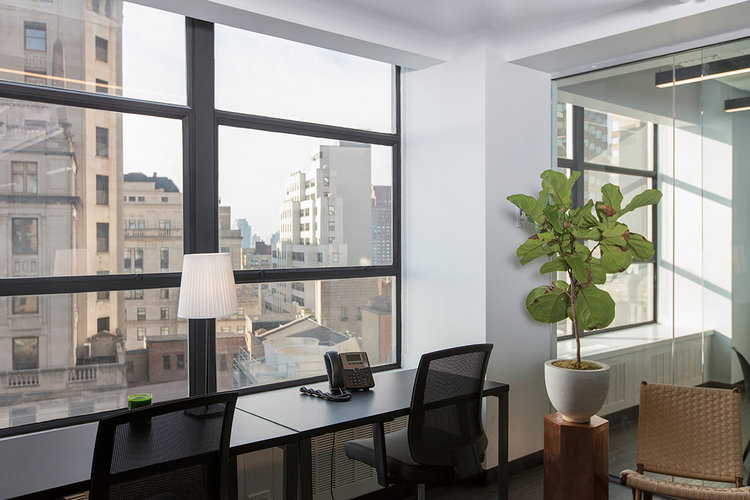
By Bond Collective Staff
Businesses of all sizes are discovering the myriad benefits of remote work. It doesn’t matter if you run a small startup or a large corporation, you can assemble a remote team and be just as successful as you would be if everyone physically reported to the office every day.
In this article, we’ll tell you everything you need to know about remote work — what it is, the benefits for employers, the benefits for employees — and show you how to operate a remote team from anywhere on the globe.
Remote Work Defined

To get you started, here’s the dictionary definition of remote work (a.k.a. telecommuting):
An arrangement in which an employee, or group of employees, works mainly from home and communicates with the company via email, telephone, or other digital medium.
The main drawback of this definition is the inclusion of the word “home.” Remote workers don’t necessarily have to work from home. They could work from a coffee house. They could work in a coworking space. They could work on a park bench. They could work in a van down by the river. The bottom line is that they’re not working in a central office every day.
So, to be clear, we rewrote the definition as:
An arrangement in which an employee, or group of employees, works mainly from an alternate location and communicates with the company via email, telephone, or other digital medium.
That simple change opens up a whole host of options for you, your employees, and your teams to create something unique that works for your business.
The Different Types Of Remote Work

Think of “remote work” as the umbrella term for any arrangement in which your employees don’t report to a physical office every day. Underneath that umbrella term exist different degrees and types of remote work. We’ve broken those options down into two broad categories. Within those broad categories are numerous opportunities for variation and customization.
Traditional Office With Work-From-Home Option
The name for this option says it all. It starts with the standard business model where employees report to a physical office every day. You might have numerous offices in different locations, but employees still assemble in one of those locations to work face-to-face with their teammates.
With that arrangement in place, employees then have the option to work from home if need be. Often, employees are still required to report to the office one or two days per week or for team meetings, but they may do the majority of their work remotely.
Remote Individual Or Team
For truly remote work, the employee or team doesn’t meet together in a physical office every day. In fact, a central, physical location might not even exist.
The entrepreneur who started the business and manages the team may run the company from his or her dining room table. And the individuals who work for that business may themselves work from their homes (or in a cafe or on the road).
In a remote work situation like this, physical location doesn’t matter.
The Key To Remote Work

The key to remote work is the internet. It makes everything possible and ties everyone together.
If you run your business primarily on computers, remote work is definitely a possibility. Cloud-based software, shared documents and spreadsheets, voice-conferencing and video-conferencing apps — all of these technologies are the foundation of remote working.
For example, if your business maintains a database (of any kind), there’s no need for the employees who manage that data to report to a specific location every day to do their jobs. If you save that database online, employees can access it from anywhere in the world, anytime they want.
On the other hand, if your business makes furniture, then, yes, your employees are going to need to physically show up each day to get the job done. They can’t do it over the internet. These types of jobs are not conducive to remote work.
The Benefits Of Remote Work For Employers

Reduced Overhead
If you employ even just one remote worker, you can enjoy significant savings thanks to reduced overhead. You don’t have to provide space for that employee, furniture, or equipment.
Imagine if your business went fully remote. You wouldn’t need that expensive lease and all the other costs that go with it. You would likely pay for various online services, but those are significantly less expensive than maintaining your own physical space.
Increased Productivity
Remote work allows your employees to adjust their schedules to optimize productivity. Maybe they work best from 5 a.m. to 1 p.m. Remote work makes that schedule possible.
Remote work also eliminates the need for a commute, which can have a negative effect on your employees’ well-being and state of mind.
Less Employee Turnover
Businesses that put a healthy work/life balance first experience less turnover when compared to businesses that don’t. And when you calculate how much it costs to onboard a new employee ($4,000 or more), you can see the benefits of keeping that expense in check.
Add to that the loss of time and productivity — someone has to train and supervise the new employee until they get familiar with the job — and the costs escalate very quickly.
But if your employees have the option of working remotely, they are less likely to leave for another job that gives them the work/life balance they’re looking for.
The Benefits Of Remote Work For Employees

Passion
Employees who are given the option to work remotely testify that they consider it a motivation to give their best 100% of the time. Remote work is a reward of sorts, and employees are willing to go the extra mile if it means they can continue to operate in this way.
That brings a passion and inspiration to their work that simply didn’t exist when they had to commute to a physical office every day.
Flexibility
Flexibility is the number one benefit of remote work for employees. Working from home (or wherever) means that they can take a 20-minute break to go pick up their child from daycare or be home for the repairman.
These things aren’t possible when employees work in an office all day. In fact, those issues become extra stress that drastically affects productivity and engagement.
Wellness
Remote work improves employees’ overall health and wellness. And happier, healthier employees work at a higher level and are more committed to their jobs.
Remote workers are less stressed and report lower absenteeism. That’s good for them and for your business.
How To Operate As A Remote Team

The most basic necessity of operating as a remote team is a computer. Without a desktop or laptop, working online together is impossible. But once your employees have that tool, they’ll need two or three other pieces of software to stay connected.
Document Sharing
Whether your remote team is writing documents or maintaining spreadsheets, they’ll need some type of document-sharing app, like Google Docs or Dropbox, to get the job done.
Group Chat
Group chat apps, like Slack, make communicating quick and easy. For most remote teams, this is the primary means of collaborating.
Voice Or Video Communication (Optional)
Now and then, it’s beneficial to bring everyone together for a voice call or a video conference to go over major developments and brainstorm new ideas. Apps like Google Hangouts or Skype make this possible.
The Best Work Environment For Your Remote Team

Work environment plays a vital role in the success of your remote employees and teams. If they’re not comfortable where they work, if they don’t have the right tools, if they’re not inspired by their surroundings, their work will suffer.
That’s why it’s essential to find the best work environment for your remote team. Working from home is convenient but is often not the most stimulating setting. And if your team meets together from time to time, a private residence or public location isn’t the best option.

The solution is a coworking space like Bond Collective. Individuals and teams can take advantage of “hot desks,” dedicated desks, and private offices to suit all their business needs.
Bond Collective goes the extra mile to provide a professional working environment — and industry-leading amenities — for digital nomads, startups, and businesses of all size. So, if you’re looking for a workspace that will increase your team’s happiness and productivity, consider becoming a member of Bond Collective.
Visit our gorgeous office spaces in New York (Bushwick, 55 Broadway, 60 Broad, Gowanus, Flatiron) and Philadelphia (Station House) to experience the best that luxury office environments have to offer. And to learn more about the advantages of coworking spaces for digital nomads, remote workers, and businesses of all kinds, visit BondCollective.com today.